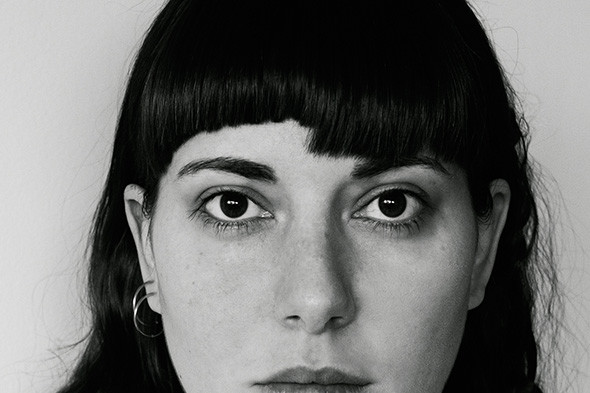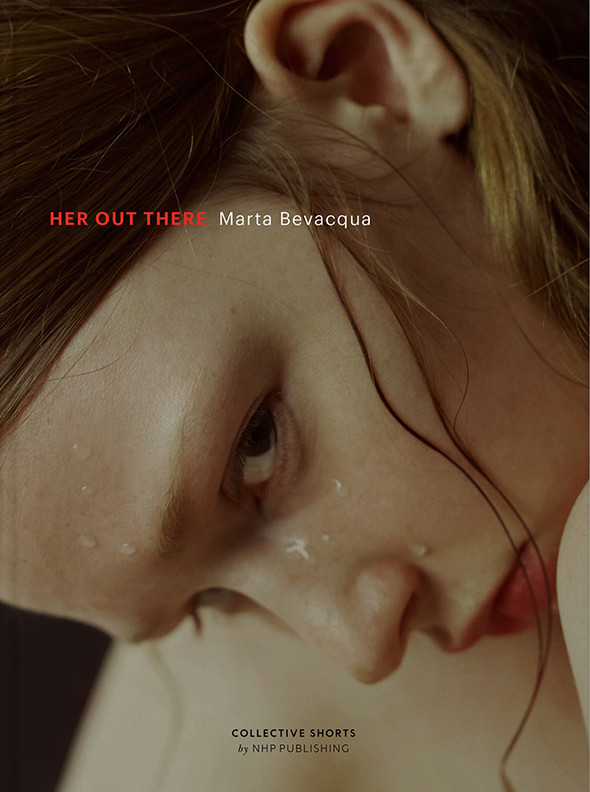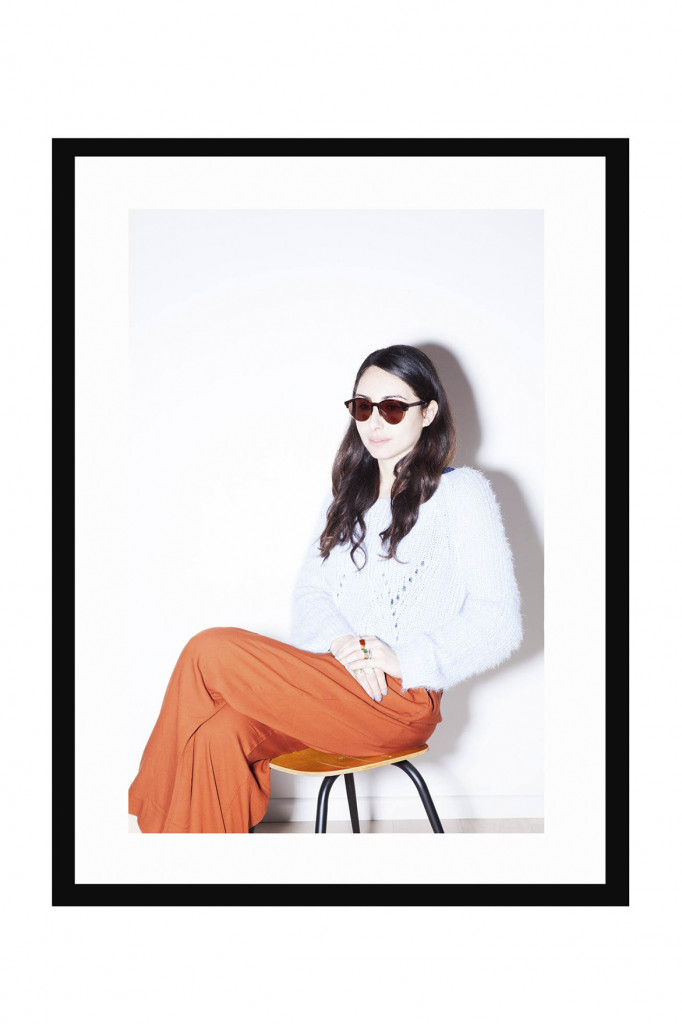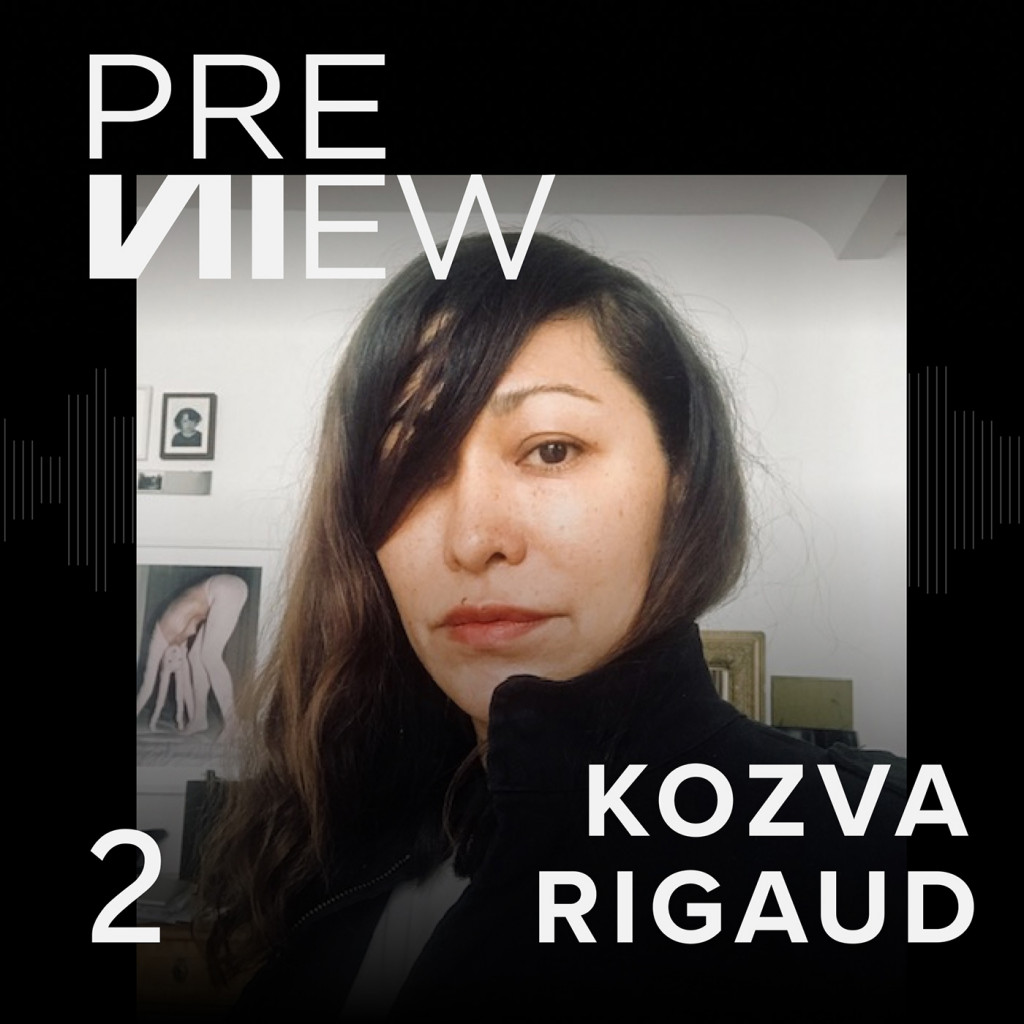Podcast
Marta Bevacqua
30 min talk
We had a chat with Italian-born photographer Marta Bevacqua (31), who exchanged her native Rome for Paris about six years ago. Since then, she’s shot the video clip for French singer Benjamin Biolay’s latest single, and has collaborated with brands such as Vichy, Dior and Samsung. Her work has been published in Glamour, Marie Claire, Elle, and others. Here, Marta opens up about getting used to shoot under the new Corona restrictions, why she almost exclusively photographs women, and how to make it in Paris.
You’re based in Paris, which was under a quite strict lockdown for a considerable period of time. What was your personal experience of these last months? How has it affected your work, and how have you been dealing with this very strange and difficult situation?
It hasn’t been that complicated for me. Of course I couldn’t shoot, so in the beginning it was quite hard, just because I really like shooting and love my job. I was able to take some free time to think about new projects, big projects which I still have to realize, and I spent my time reading, writing, eating, and cooking. I did a lot of things and I was not alone - I live with my boyfriend, which made it easier. At the end I have to say it has been a good time for me.
Was it a problem financially? How many shootings did you have to cancel?
A lot. I lost a few jobs. But I hope I can complete them soon. The good thing is that I worked quite a lot just before the lockdown. It was a very busy period. I also needed some time to rest a bit, so in the end, as I worked so much before, it’s ok. I’m happy because now I already started working again.
Can you do big shootings? Are there restrictions you have to work around?
There are still some restrictions and we don’t do really big shootings. It’s 10 people maximum, we have to wear masks, and keep our distance. Everything is controlled, and it’s a bit complicated to work like that, but it’s possible.
What was your first shooting with these new rules like? Were there certain things you had to refrain from that you’d normally do?
There was one situation where I’m in front of the model, I’m shooting, the model is laying on the ground, and there’s something I want to see better, so I need to approach and to touch the girl - but I am not allowed. Instead, I had to call the make-up artist who was wearing a mask at that moment and she did what I asked her to do. But by instinct I tried to approach the model myself, but I can’t. At that moment I wasn’t wearing my mask because we were outside and quite far apart. You can’t do everything the way you always do. Now you have to think first instead of just following your instinct.
You’re Italian and based in Paris. When did you move there and why did you choose Paris and not London or New York, for example?
My choices actually were Paris, London, NYC or Milan. I wanted to go to a fashion city. I came to Paris six years ago. It was by chance. I’m from Rome, and when you work in fashion, it’s not the perfect city for that. In Italy, you’d go to Milan. Since I had to leave my home and friends and family anyway, I thought - why not go abroad? It can be a great experience, I can learn another language… I was young, and ready to live my life. The real choice was between Paris and London, because NYC was a bit too far. In the end it was Paris, where I had been before, as well as in London. I loved the atmosphere of the city.
Do you think it has been a good choice for your career? Is it a good city for a photographer?
Absolutely, yes. I think it was the best choice of my life. The first year was really complicated, but from the second year onwards, everything was perfect. I found much more than I was looking for.

How did you enter the Parisian photography scene? When you arrive and don’t know anyone – how do you get into the industry, how do you meet people, how do you find jobs?
At the beginning, it was complicated. I started by contacting a lot of people through Facebook, Instagram, and various websites. I spent a lot of time making contacts with stylists, make-up artists, models, model agencies. I started to shoot a lot. The first year I was shooting at least one set per week. For free, of course. Just to make my work known. And then things happened step by step. I found my first agent, which didn’t work out very well, so I changed, but now I’ve been with another agency for two years, and it works very well with them. It’s also thanks to the agency that I started working more and more.
Would you say then that it’s important for a photographer to have an agency?
It depends. I know a couple of other photographers who work very well without agencies. It depends on how you work and how you are as a person, but for me it’s very important. They deal with clients in a much better way than I ever could. They also helped me constructing my portfolio and building and keeping my style, with commissions, jobs, and campaigns. It’s really important to find a good agency. I really love the people in mine. We communicate a lot and they help me going forward in my career.
Let’s go back to the very beginning. Do you remember your first camera and how you started taking photos?
Of course. I started by chance, when I was in high-school. One afternoon at home, I found one of these little cameras that people would take on vacation. It was in no way a professional camera. I started with that one and quickly realized how much I loved it. For my 18th birthday I got my first “real” camera. It was a Sony Alpha 1. It wasn’t the perfect camera but really good for me at that moment. One year later, we were robbed, and it was gone. iI made me realize how much I love taking pictures. I didn’t have a camera for two months, and it was horrible. There were no Smart phones yet at the time, so I couldn’t take any pictures whatsoever. Later I got an Olympus E 1, and that was my “real” first camera, which I kept for about 5 years. I learned everything with that one.
You never actually studied photography. Do you feel like it was an obstacle?
Sometimes it maybe was an obstacle when it comes to technical things, but generally, no. It was kind of cool because I never thought about technical aspects and this really helped me to build my style and my vision. On the other hand, at my first studio shooting, I didn’t know how to build a set. I watched the others, how they did it, and then I was able to do it as well. The first times I had really technical stuff to do, it was really complicated, but with experience, you can do anything.
What kind of advice do you have for others, who want to get into fashion photography or photography in general – there’s so much competition… how did you “make it” in the end? What do you think was essential for your success?
I’m not sure. I don’t know exactly. Maybe it’s my style… it can be very artistic. In the beginning, it was a problem. My first contacts in Paris told me “your pictures are too artistic, you can’t work in fashion”. But then I tried to combine both aspects, keeping it artistic for personal projects and changing little details for the fashion industry, and it worked out really well. The best thing is to know how to change or to evolve to satisfy the market as well. You have to know what they are looking for at every moment, because fashion changes so quickly. Each year there are new codes to be respected. It’s important to follow the wave while trying to be innovative and also faithful to one’s personal style.
Which codes do you have to pay attention to right now?
I have the impression that especially women can show bodily faults. If you’re not skinny, it’s ok. If you have scars, it’s ok. Particular girls who are proud of who they are. They don’t care. Beauty means each person is different, and we love these differences.
Fashion photography can often be very sleek and cold, but your images are very dreamy and emotive. Would you agree with that description and how do you achieve your images always being this warm and full of emotion?
I usually talk with the models before, and I always try to tell a story through the pictures. I like the fact that we can build the story together. I explain the concept and mood, and then the model just needs to move, and I follow her. Maybe I give some indications regarding the movements or expressions, but mostly I let them be free. Even if the story we’re telling together is not true, it’s sincere because the emotions are true.
I read you only work with natural light, even inside. Is this still true and might this be the key?
Most of the time it’s not real light. It has happened that I worked in a studio with artificial lights as well, but that’s maybe 1 out of 10 shootings. I love to work with window lighting, like this it’s always very natural and it’s not too much constructed, which I don’t like.
You also shoot videos, for example for musicians like Benjamin Biolay – how did you get into video-making and is this something every photographer needs to be able to do these days?
I started doing videos by chance. A director of photography contacted me about four years ago and told me “you should make some videos”. I said that I’m a photographer, I don’t know how. He told me, “let’s try to do something together”, and I directed my first personal video. I loved it. As I had already worked in the music world, shooting album covers and musicians for magazines, I got some proposals for video clips. I really loved it, but it’s very different from photography. Today, as a photographer, it’s better to be able to do both. Sometimes, clients prefer to have a person who does both. It means that the vision is the same – there are some jobs requiring pictures and videos, and having the same person behind the camera is better.
What is it that you like about video-making?
What I want to do is telling stories, and I admit that sometimes telling stories is easier with videos.
Were there any challenges in the beginning?
Of course. Everything is moving. So you need to pay attention to everything. With photography, when you want to do a portrait of a girl in nature, you can do that in a park next to a road, and it won’t show on the image. With video, and when the model is walking, you need to be in the right place. In photography, you can make it appear like you are in the forest, even if you’re not, but for a video, you need to be in the forest.
Nature seems to be a significant theme in your work. Where does that come from? And how do you keep this connection alive in a city like Paris?
It comes from my home. I grew up in the countryside just outside of Rome, in nature. We had a big garden, cats and dogs. I applied that in my work and I have always benen very attached to nature. I think that’s the thing I miss the most while living in Paris. Fortunately it’s just a two hour flight to go back. I try to go back to my family home quite often to enjoy nature, my nature that I grew up with.
Basically all images I saw in your portfolio picture women. Have you ever photographed a man?
(Laughs) Yes. I tried! Honestly, it has been complicated with men. During my first year in Paris I shot men quite often, but I had the impression I was losing myself a bit; I had no direction for my style. People told me quite often: “We can see that you have a style, but it’s not developed enough.” It’s better to concentrate on one thing and give it your best, and once your style is finally built up, even if it’s always evolving, which is normal, you can start doing new things.
I was doing a lot of different things and I thought I need to photograph women, and men, and urban, and nature, and beauty, and fashion, and fine art. At the end, it’s not like that. It’s better to focus on something. It helped me to better understand what I really wanted to do. I decided to focus on women because it was easier. By instinct, I chose women models. A year ago I started shooting men again, rarely, and it’s much more difficult for me because I still have the impression I don’t know how to direct them. But I’m learning. I do it more and more often and I think I will start shooting men very soon. I feel ready.
So it wasn’t a political choice, that you were tired of the male gaze… you just felt more comfortable with it.
Yes. It was not a political choice, just instinct. I think as a woman I can maybe understand them better. It’s easier for me to express something with women. Maybe we connect more easily. I love when I work in an all-female team, from make-up to stylist.
Do you think women photograph other women differently?
Yes. I have the impression that women, even when they have a very strong style…there is always a delicacy behind the pictures that sometimes men don’t have. I’m not saying it’s more beautiful or better, it’s just different. When you’re a woman and you have a woman in front of you, you must have a different vision. It must change something.
Her out there by Marta Bevacqua

You also published a book featuring photographs of women. How did this book come about and what’s the idea behind it?
I always wanted to publish a book. I was lucky, because a Swedish publisher asked me if I was interested in publishing one. I saw the other books they had done before, and they were beautiful. I felt very lucky. We started together to think about the content, and since I didn’t have enough pictures published to fill an entire book, I did an overview of my work in general. As I naturally have a lot of women pictures in my archive, we decided to leave it at that, and it became a book about women. The title, “Her out there”, refers to “her” in the book, but also “her” out there in the world. We chose a lot of pictures taken in different locations around the world. “Her” usually refers to one girl, but at the same time she’s all the girls.
Do you also photograph women you encounter in your life, or is it always models?
It depends. Both. I’m always in contact with model agencies, and as with some of them I have a very good relationship, they contact me when they have girls that they think I might love. Most of the time they’re right, because we’ve been working together for years. They’re usually quite particular models. Sometimes the girl will only be in Paris for three days, and I have no time to do a real job with her, but I want to shoot her because she has something I really want to capture. In the end I mostly end up with models. But also with friends and actresses. Sometimes I just meet people randomly and we decide to do a shoot together. Once, I was in a pub with a friend of mine, and I was fascinated with a girl at the table next to us. She was perfect and I thought oh my god, I need to shoot her. I was too shy to ask her. My friend went to talk to her in the end and we not only became friends, but she also became a model, and even has an agency now.
You discovered her!
Yes, I scouted her - we can put it like that! (laughs)
What is it that fascinates you about some faces? Is it possible to put it into words, what you’re looking for in a model?
It’s very complicated to put into words. When girls are particular, when they have something. I think it’s about emotions. I see a face, and I can imagine the kind of emotions she will be able to give me for the picture.
You already mentioned earlier that when you arrived in Paris, you contacted a lot of people through Instagram and social media. You have quite a massive following, on Facebook as well as on Instagram. I think on the latter it’s now 478.000 followers – how did you built this up and how do you use Instagram for your career? Do you think it’s important for photographers these days to use these platforms?
Today, the most important thing is having an Instagram account. For most of the jobs I get, clients find me on Instagram, and sometimes through my agency. But even then, they will always check your Instagram. It’s like an online portfolio. It’s cool because you can build it just like you want to. You don’t have to limit yourself to images that were the result of jobs, you can also post personal projects. Even your personal life - you can do anything you want. I did nothing to build it up, it just happened. I opened my account one week before moving to Paris, everything kind of happened at the same time. I opened it when the chronological algorithm was still working, which might have played a role.
Did you have a rule, one picture a day or something like that?
No. It happened instinctively. I never really thought about it, but I do think that at the beginning I was posting every day. Now I post about three times a week, but it’s not something I really plan, it’s quite spontaneous. By instinct I try to find a balance, not posting too much but staying active.
You’ve done a lot of different things, worked for big brands, famous musicians…. is there something or someone you dream of shooting one day?
That’s a complicated question – there are so many. So many actors, even male ones. So many actresses. So many people. The list is very long. There are so many beautiful souls in the world to photograph. One life is not enough to photograph them all.
You’ll always have something to look forward to and it’s never going to get boring then!
Absolutely. And you need to be lucky and talented enough to get the right opportunity, that the right people see your work and decide to give you a chance. There are so many factors. First of all I dream of shooting a lot of incredible souls, and then let’s see.
Marta Bevacqua was interviewed by Sarah Schug
Want more? Listen to one of our insightful fashion photography podcasts.

Interview
Federica Trotta
Italian fashion stylist Federica Trotta opens up about abandoning her law studies in order to pursue her dreams, launching her very own magazine and what it takes to make it in the highly competitive world of fashion.
READ MORE
Podcast
Kozva Rigaud
We speak with Berlin-based Shotview founder Kozva Rigaud about how the current Corona crisis is affecting the photography business, her successful two-decade journey with Shotview, and how to always keep your head above water.
READ MORE
